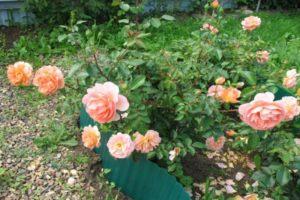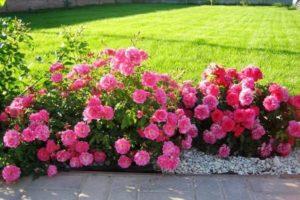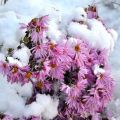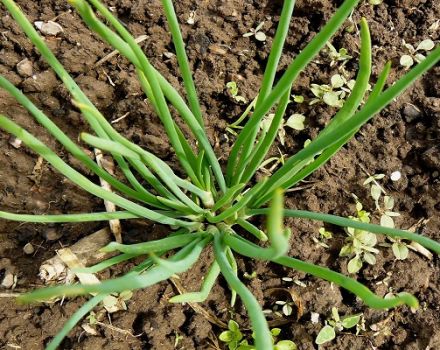Description and rules for growing a climbing rose of the Iceberg variety
Growing a climbing rose Iceberg has a number of features. This culture has beautiful snow-white flowers and is actively used in landscape design. In order for a plant to develop well and bloom profusely, it needs high-quality care.
For this, the culture is timely watered, fed, cut off. Protection against diseases and pests is also important.
The history of the creation of the variety
This floribunda was bred in Germany back in 1958 as a result of crossing a hybrid tea and musky climbing rose. Iceberg is a species of the beautiful Schneewittchen variety.
Description and characteristics of the Iceberg rose
This culture is fast developing. Its height reaches 150 centimeters. The bush is highly branched, and the crown has a uniformly rounded shape. The lifespan of a culture is 20 years, after which the roots die off. Young shoots are thin and light green in color.
The leaves are large and glossy. Their edges are smooth or slightly serrated. Flowers reach 6-7 centimeters in diameter. The unopened bud is distinguished by its elongated shape and greenish color. Sometimes a pink tint is observed.
The opened flowers are distinguished by a snow-white color. They are semi-double and contain many yellow stamens. The buds are present on the branches for 1 week. They form brushes of 3-15 pieces.

Main advantages and disadvantages
This variety has many advantages:
- Lush and abundant flowering. The culture is used to decorate various structures - arches, walls, fences.
- Possibility of re-flowering. With the timely removal of wilted inflorescences, it is possible to achieve the appearance of flowers again.
- Unusual inflorescence structure and interesting shade. The flowers are cupped and semi-double in texture.
- Pleasant aroma. He is weak enough.
- Fast growth. For a short period of time, a rose can hide unattractive garden elements.
- Resistant to frost.
- Medium disease resistance.
At the same time, the culture is distinguished by certain disadvantages:
- The need for the construction of a support.
- Risk of black spot damage. This disease develops in humid climates.
- The inability to use for decorating bouquets.
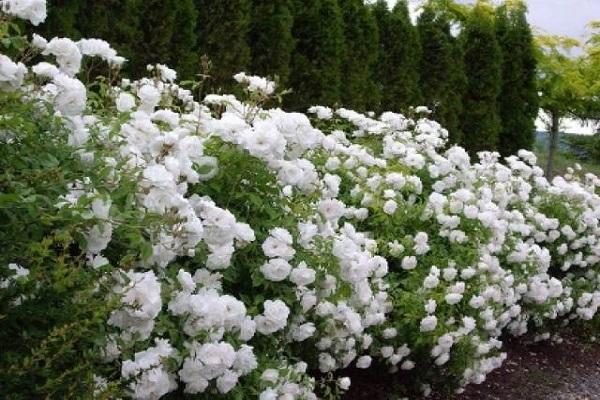
Features of growing a flower
In order for the plant to develop normally and please with lush flowering, it is worth planting correctly.
Optimal location
It is recommended to plant a rose in a sunny place. In the shade, the culture will not bloom profusely. It is best to plant the flower out of the blue or on a small hill.
It is not worth placing the culture in the lowlands, since in such places there is stagnant water.
Soil and seedling preparation
The rose should be planted in an area with light and fertile soil. Dense soil with stagnant groundwater is not suitable. Before planting, the land should be loosened with sand and peat, and humus should be added.
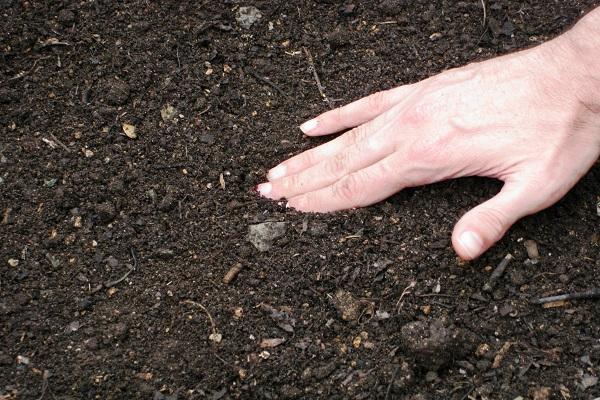
It is worth planting a plant in a pre-prepared groove. Its diameter should be 65 centimeters and its depth should be 1 meter. It is worth placing a fertile mixture of humus, garden soil and river sand in the depression. These components are taken in a 1: 1: 2 ratio. You can also add a bucket of wood ash and 150 grams of mineral fertilizers to the hole.
A few hours before planting, the bushes should be immersed in water. It is permissible to use a growth stimulant. This stimulates the rooting of the bushes.
Planting process
To carry out planting work, it is worth doing the following:
- Trim the roots of the seedlings. In length, they should not exceed 30 centimeters. It is also worth removing excess shoots - 3-4 pieces should remain.
- Carefully place the seedlings in the grooves and sprinkle with earth.
- Water the beds in moderation.

The nuances of plant care
In order for the culture to fully develop and please for a long time with abundant flowering, it is worth providing it with high-quality care.
Watering and moisture
Watering the plant is strictly at the root. Moisture should not get on the leaves of the crop. The frequency of watering depends on the climate. The soil should not dry out.
Top dressing
Organic products are applied in the same way as mulch. The plant is suitable for rotted humus, peat, compost. In the fall, the mulching layer is certainly renewed. This contributes to the enrichment of the chemical composition of the soil and protects the crop from death. At the beginning of summer, minerals or ammonium nitrate are used.
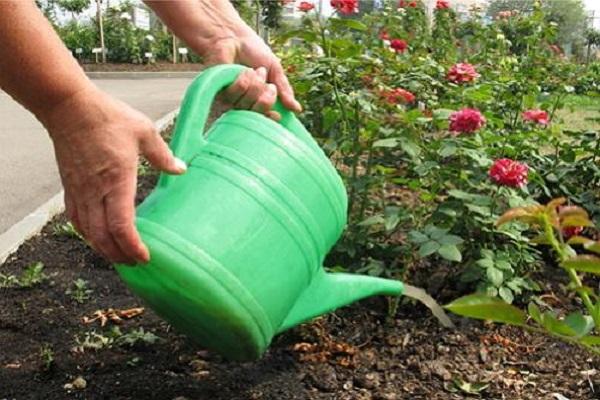
Pruning and replanting
In spring and autumn, the plant needs pruning. During the procedure, shoots older than 3 years are removed. Last year's gains should be shortened by 2-3 buds.
When planting a plant in an unfavorable place, it should be transplanted immediately. This is recommended in the fall. To do this, the ground part of the culture should be removed from the support, and the bush should be carefully dug. It is recommended to retreat 60 centimeters from the base of the plant.
Then the culture should be pulled out of the ground, get rid of excess soil and immediately plant it in a new place. The transplant is carried out very carefully so as not to damage the roots. After 2 days, add soil and spud the plant.
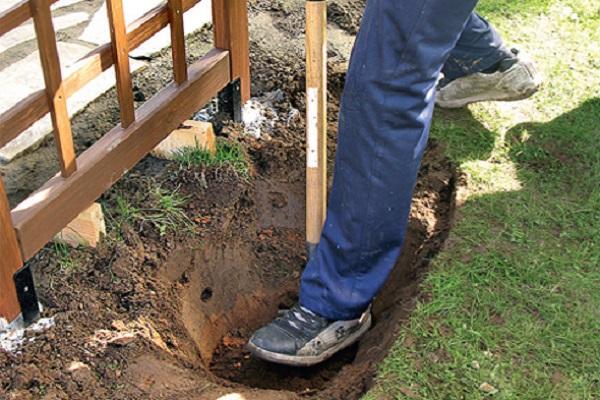
Wintering
The plant should be covered for the winter. The rose has flexible shoots, so they can be pressed to the ground and fixed. From above, the structure should be covered with spruce branches or agrofiber. It is also permissible to use cardboard boxes.
With the arrival of spring, it is recommended to remove the insulating layer immediately so that the bush does not break. After that, the soil around the bush should be well loosened.
During and after flowering
The flowering culture continues all summer. For a rose to bloom fully, it needs sun and drained soil. Also, the bush needs moderate moisture. To kick off the second wave of flowering, it is recommended to pick off wilted buds.

How to protect a rose from diseases and pests
The plant is resistant to the development of diseases and pest attacks. However, sometimes the culture is affected by black spot. Increased air humidity leads to the development of pathology. Also, the cause is stagnation of moisture in the soil.
The affected plant should be dug up along with the roots and transplanted to a distant place. The culture is recommended to be treated with anti-fungal agents. In advanced cases, the rose is destroyed.
Of the pests, aphids, thrips, spider mites are dangerous. At an early stage of the lesion, it is possible to cope with aphids manually. After that, only chemical agents help to destroy the parasites.

The appearance of a silvery plaque indicates an attack by spider mites. It is often seen in hot and dry weather. Acaricide Neoron helps to cope with pests.
How to propagate
It is permissible to propagate a plant in the following ways:
- seed method;
- graft;
- grafting;
- layering.
Usually, cuttings or layering are used to breed roses. It is these methods that are considered the most effective. The seed method is least often used. In this case, it is rarely possible to achieve good results, especially when self-collecting planting material. Roses without varietal characteristics grow from seeds harvested by their own hands.

Use in garden design
Iceberg roses are not suitable for cutting. Shrubs are usually used to decorate a garden plot. Cultures look especially good when grown on a trunk.
In addition, the shrub is perfect for decorating alpine slides, gazebos or lawns. Recently, monochrome white gardens have become increasingly popular. They can be based on a climbing rose Iceberg.

Tall curbs are considered an equally popular option. Climbing roses are often used to decorate them. Also, with the help of Iceberg bushes, it is possible to create an unusual design on the walls and arches.
It should be borne in mind that white roses are great for planting in small areas.
With their help, it is possible to visually expand the space.
The climbing rose Iceberg has excellent decorative characteristics. With its help, it is possible to decorate the garden area and create many attractive compositions. To get an excellent result in growing crops, you should strictly follow the recommendations for the care of the crop.
